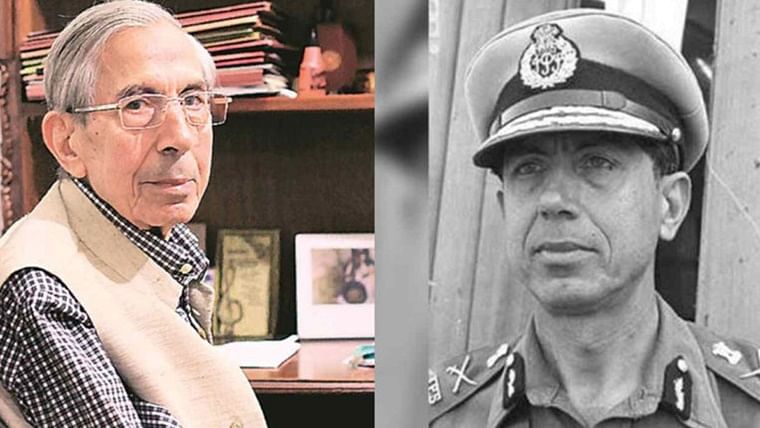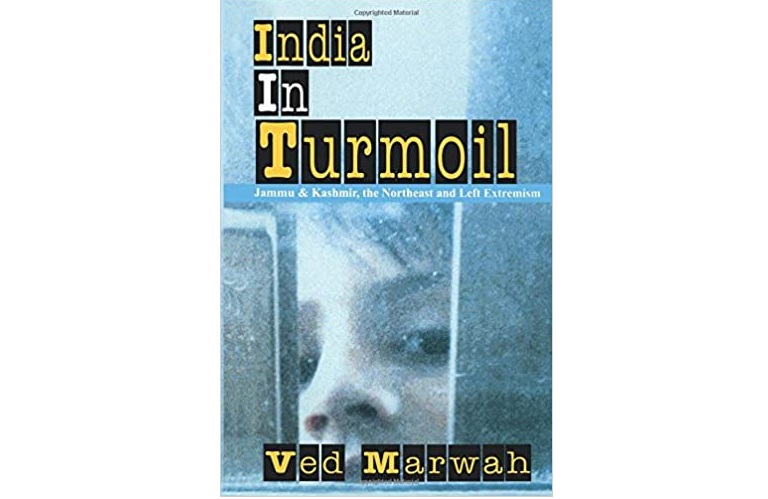
Late cop-governor Ved Marwah’s 12-year-old book, “India in Turmoil”, makes more sense than generic garbled opinions on Kashmir; however, a lot is left to be read in between the lines.
By Yash Daiv
ONE can imagine top cop and former governor Ved Marwah as a schoolboy in Peshawar during 1947. He must’ve been 13 years old when he saw the long convoys of trucks carrying Pathans from tribal areas of Pakistan. They were raising weapons in the air, vowing liberation of Kashmir. These people were revered by the government as was even apparent to his adolescent self, he claims.
He records such observations in the book, India in Turmoil. It’s the kind of hardcover you would rarely expect on the shelves of a quaint café situated thousands of kilometres away from Kashmir. I got my hands on this 2009 edition — a commentary on shortcomings of decision-making and internal security threats to India — at a coffee shop in Pune.
The intention of picking it up was simple: I wanted to know how Marwah, spent his childhood in Pakistan, has observed the security issues of India (especially Kashmir), left-extremism and the quest for a solution.
Marwah does not mince words while describing India’s posture in the introduction. He labels India a soft state where the rule of law is often shuttled around in vote-bank politics. He writes, “All pervasive corruption is eating into the vitals of the Indian state. In public perception, most, if not everyone, politics and administration are corrupt. Corruption flows from top to bottom, and one sees new acceptability to blatant corruption at the highest echelons in administration.”
Concerning Kashmir, which comprises 100-odd pages, the ex-cop laments the growing ineffectiveness of the government. He has described the chronology of problems through decades concisely.
He begins with Hari Singh “being cornered” into signing the Instrument of Accession, so that army could be sent to Srinagar in response to the “liberation army” from Pakistan. India then handed over the reins of Kashmir to Sheikh Abdullah, who demanded autonomy much to the horror of Jawaharlal Nehru, who wanted his “friend” on board to validate his secularistic stance.
Abdullah’s arrest, Marwah says, incited the separatist movement and then on, birthed many internal issues and carnages.
In the solution section of the book, Marwah perhaps has said the most sensible thing anybody has in a while.
While rebuking division of Kashmir on any lines (he heavily criticises the proposal of seven regions based on ethnic lines), he states that New Delhi “should not interfere”. Only if the governments over the decade had heard its worker bees!
Despite such laudable assertions, Marwah’s account of Kashmir comes with its own set of problems.

The narrative lacks editorial deftness — a lot is left for the reader to guess. For instance, while talking about the Hari Singh phase, the ex-cop completely omits the Maharaja’s intentions while acceding to accession. They’ve been perhaps best laid by Journalist KS Komireddi in his Malevolent Republic: A Short History of the New India. He states, “He (Singh), anxious to keep the Muslim socialist out of power, insisted on retaining some of his royal prerogatives.”
Moreover, Marwah — in his black-and-white style of saying things — has employed the word Jihad in its most negative connotation, despite several researchers and linguists demanding decorum while using ambiguous words (The Cambridge Companion to New Religious Movements states that Jihad is “a hard term to define”).
Also, Marwah’s nonchalant reference to Kashmir’s freedom as a “mere theory” back in 1947 (which, he says, eventually escalated) impinges the narrative flow. His objective telling of events fails to capture the complexity of the ‘freedom’ sentiment that has become a genetic code of sorts.
The emotion was rife even during the Partition, as was described by American journalist Margaret Bourke-White, who was in Kashmir during that momentous time. She detailed the territory as “heaped with rubble and blackened with fire”. Locals were mourning the martyrdom of a local leader, thus being far from the idea of ascension and closer to the notion of freedom and autonomy.
Further, the objectiveness derails in between when Marwah revers India. He claims that India had rejected the Two-Nation theory and still hopes that Hindu and Muslims will live in harmony on the land. The naïve thought is slightly outlandish since he chose to write it down after major communally violent milestones — Babri, Godhra, etc.
The flaws aside, the concise history is readable, but under supervision. With an inherent sense of responsibility missing among social media patrons, who feel Kashmir is inscrutably infested with violent ideas (a garish failure of mainstream media for having carved it in their minds), it has become all the more important to guard the sanctity of the subject.
I find myself going back to the initial thought: What was this book doing on a quaint café’s shelf? Who put it there? From the copy in my hand, it could be safe to assume that the previous reader was interested in a few paragraphs. If any of those were read out of context, the picture would be different.
Follow this link to join our WhatsApp group: Join Now
Be Part of Quality Journalism |
Quality journalism takes a lot of time, money and hard work to produce and despite all the hardships we still do it. Our reporters and editors are working overtime in Kashmir and beyond to cover what you care about, break big stories, and expose injustices that can change lives. Today more people are reading Kashmir Observer than ever, but only a handful are paying while advertising revenues are falling fast. |
| ACT NOW |
| MONTHLY | Rs 100 | |
| YEARLY | Rs 1000 | |
| LIFETIME | Rs 10000 | |









